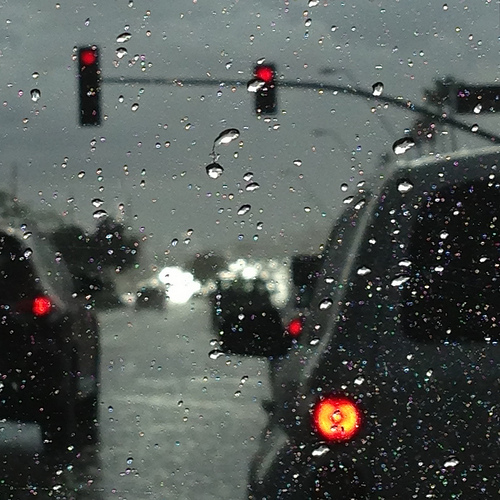The dangerous thing for cars in western Washington, particularly Seattle and south King County, is that the area is built on multiple hills. Drivers are using their brakes all the time to climb a lot of hills and that’s really tough on the car. The car is working hard to climb a really steep hill, and then on the other side you’re using your brakes 10 or 15 times to go down a hill that’s only two miles long. Your brake fluid needs to be in good shape to handle that kind of stress.
Unfortunately, one of the properties of brake fluid is that it absorbs moisture in wet weather.
Photo Credit: kevin dooley via Compfight cc
Brake fluid will absorb moisture to the point to where it is made up of brake fluid and water. Water has a boiling point that is a lot less than brake fluid. So as you’re going downhill and you’re holding your foot on the brake, your brake operating temperature may reach 500, 600, 700, even 800 degrees. Water boils at just a little over 200 degrees. So we’ve got boiling brake fluid.
When brake fluid boils, it turns into vapors. You can’t compress a vapor the same way that you can fluid. Fluid doesn’t compress, but a vapor will compress. So you’re pushing on your brake pedal and all of a sudden it goes to the floor. Now you’re going down a hill, and you have no brakes. All of this could have been avoided by changing the brake fluid.
If you live in Arizona and other drier climates, you can get away with not changing your brake fluid for 5, 6, 7, or 8 years. In Washington, if you go a couple of years, you’re going to start having some serious brake problems by not changing the fluid.
That’s probably the biggest shock to people who move to Washington: keeping up with air conditioning service along with brake fluid service. Those are big differences between whether you’re from Southern California or Nevada where the climate is typically a lot drier.
Another thing that we get a lot of is rain. When it rains here and the roads are wet, a lot of moisture enters the vehicle. It finds little crevices, the breathing vents and stuff, and enters into the fluid. It’s really common for us to service a rear differential on a truck or on a full size car and pull the fluid out to find the fluid looks like chocolate milk when it is supposed to look like vegetable oil.
The reason for this is that the fluid absorbed all this moisture in our air and on our roads, and has contaminated the fluid. When the fluid is contaminated, it loses its lubrication properties. Then all of a sudden you start to do damage to hard parts on the car.
Contaminated fluid and faulty air conditioning are the two most common problems with a moist climate that we see at our shop.







